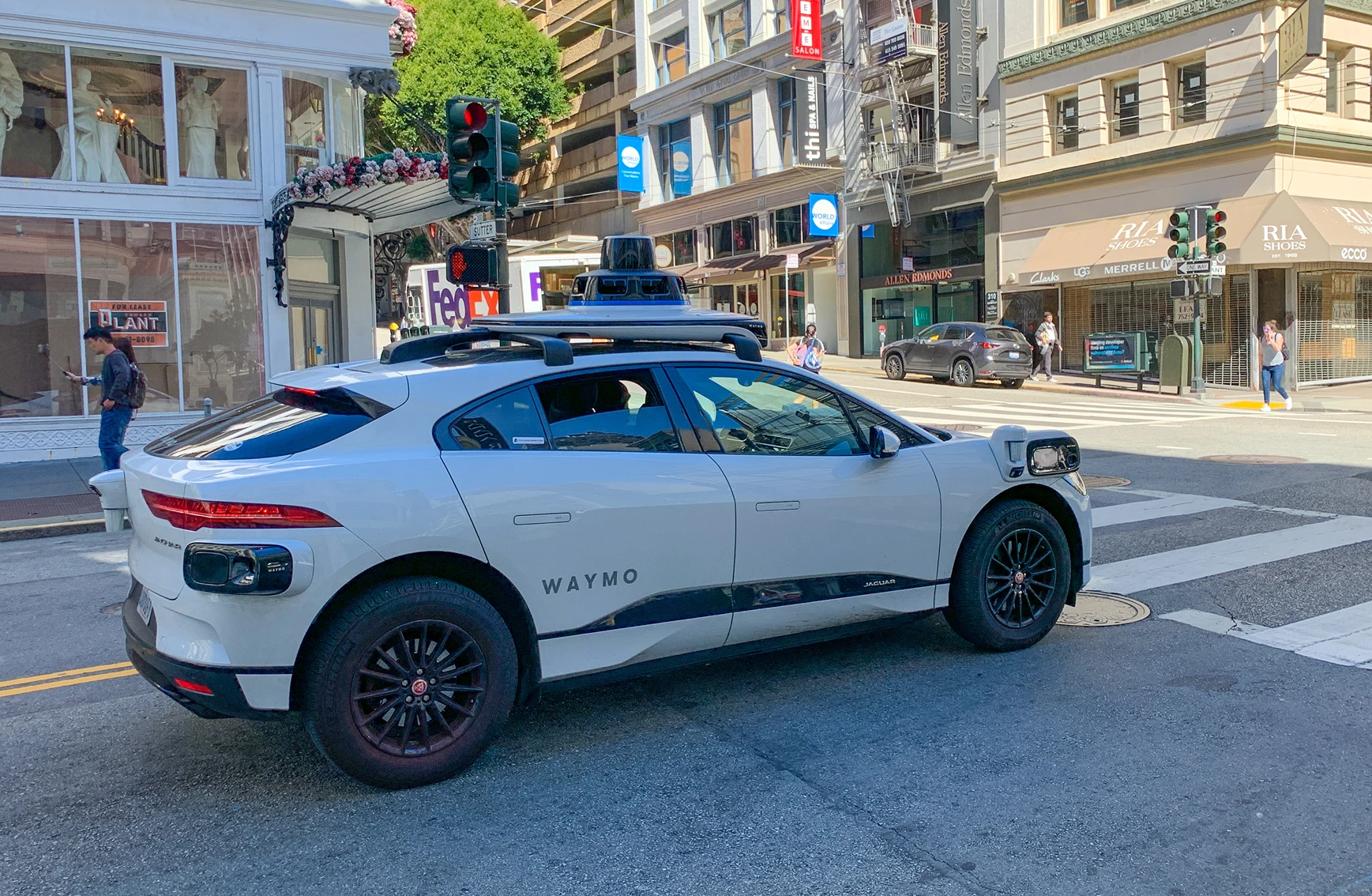
Imagine it. You’re driving and come to a stop light. Next to you a car pulls up. There’s no driver. You do a double-take. Yup. No driver.
However, driverless vehicles are pretty normal for you if you’re living in Culver City. As of late 2024, Waymo has launched its fully driverless ride-hailing service in the area. Whether you’re heading to dinner downtown or commuting across town, you can now summon a ride with no human driver behind the wheel. It’s just a quiet, electric Jaguar I-PACE navigating the roads on its own.
A New Way to Get Around
Waymo’s expansion into Culver City is part of a broader Los Angeles rollout. It covers nearly 80–89 square miles across Santa Monica, West Hollywood, Downtown LA, and of course, Culver City itself.
Rides are available 24/7. Booking one is as simple as using Uber or Lyft. You just download the Waymo One app, set up your account, and enter your destination. When your sleek, all-electric Waymo vehicle pulls up, you unlock the car with your phone and hop in. Each vehicle fits up to four passengers and offers a surprisingly smooth and quiet ride.
How the Technology Works
These vehicles aren’t just futuristic-looking. They’re packed with some of the most advanced autonomous driving technology in the world. Known as the Waymo Driver, the system uses a combination of:
- High-resolution cameras
- Lidar (laser-based sensors)
- Radar
- Real-time mapping and machine learning
Together, these tools allow Waymo cars to navigate complicated traffic patterns. They’re able to detect pedestrians and cyclists, respond to road closures, and even yield to emergency vehicles. Again, all of this is done without human input.
Waymo says its technology has logged over 40 million miles of real-world driving and billions more in simulation. This makes it one of the most tested self-driving systems globally.
Riding in a Waymo: What It’s Like
Early riders in Los Angeles, including many in Culver City, have described the experience as surprisingly comfortable and futuristic. Inside, you’ll find:
- Clean interiors with plenty of legroom
- Phone chargers and interactive touchscreens
- Cautious, rule-following driving behavior
Waymo’s vehicles are programmed to follow traffic laws strictly. That can sometimes mean a few quirks. These quirks include hesitating during unprotected left turns and making conservative lane changes in busy intersections. However, the overall ride is smooth and predictable.
And it seems to be working: 98% of LA riders have reported satisfaction, and 96% say the service is useful.
Community Impact and Expansion Plans
Waymo isn’t just about futuristic convenience. The company positions itself as a safer and more sustainable alternative to traditional ride-hailing. These are thanks to its all-electric fleet and crash-avoidance tech. In Los Angeles, Waymo has also partnered with community groups to support local initiatives. These include helping out by delivering groceries and distributing safety gear.
As of early 2025, Waymo is steadily expanding its coverage. Signs point towards more service near LAX and additional neighborhoods within Culver City.
Waymo Expanding Beyond Los Angeles
Waymo is preparing to expand its autonomous ride-hailing service. Operating in several major U.S. cities signals their continued momentum. In Atlanta, the company has opened an interest list for riders and is expected to launch commercial service soon. Miami resumed testing in early 2025 with plans to go live by 2026. Washington, D.C. is also on track for a 2026 launch, offering service through the Waymo One app.
Waymo is also conducting manual testing in a variety of new locations, including San Diego, Las Vegas, Orlando, and Upstate New York. These tests gather local driving data to evaluate system performance ahead of potential launches. Meanwhile, international testing has begun in Tokyo. The company is collecting data and mapping the city with human drivers. To support the scale of this expansion, Waymo and its manufacturing partner Magna International are doubling robotaxi production at their Arizona facility. The goal is deploying tens of thousands of autonomous vehicles across U.S. markets by 2026.
What Happens in an Emergency?
The Culver City Police Department is trained to interact with autonomous vehicles like Waymo’s. If there’s an incident or emergency:
- The car can recognize emergency lights and sirens
- It will pull over safely and stop
- Passengers and law enforcement can communicate directly with Waymo’s Rider Support team
- If needed, the car will call 911 and dispatch a human support team to the scene
Waymo’s vehicles are designed to handle a wide range of situations on their own. However, there’s always a real person available to help passengers, just a button-push away.
Final Thoughts
If you’ve seen a sleek Jaguar I-PACE cruising through Culver City with no one in the driver’s seat, now you know: it’s not a glitch in the Matrix. It’s Waymo.
With 24/7 availability, top-tier safety features, and a growing presence in LA, Waymo’s arrival in Culver City offers a glimpse of the near future. It isn’t the Boring Company’s Hyper Loop, but instead urban transportation that will be cleaner, safer, and completely hands-free.
If you’re interested in buying or selling real estate in a futuristic city where cars drive passengers around, reach out to me.